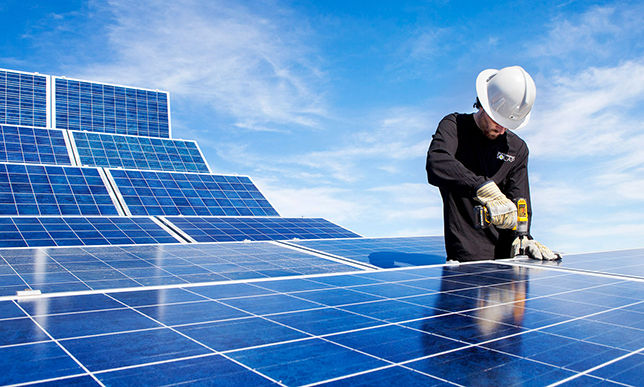Canada's Federal Budget 2024
- Advanced Energy

- Apr 17, 2024
- 3 min read
The 2024 federal budget reaffirmed the 30% Clean Technology Tax Credit (ITC) for Canadian Businesses. With other incentives and programs available (industry and jurisdiction requirements), you can expect up to and over 45% in Business Income Tax Savings depending on your business's operations.
While there are several conditions for eligibility, our P90 Energy Solar Systems and our team are well-versed in meeting and exceeding these requirements. This ensures that our clients can fully leverage the Clean Tech Tax Credit (ITC) and other incentives available to their businesses.
Contact us today to learn more about how we can help energize your future.

How it works: Clean Technology Investment Tax Credit (ITC)
The Clean Technology ITC encourages investment in the adoption and operation of clean technology properties in Canada, such as wind, water, and solar equipment, geothermal energy systems, air-source heat pumps, and non-road zero-emission vehicles.
The clean technology credits are proposed to be available for eligible properties acquired on or after March 28, 2023, and before 2035. The credit rates vary depending on the year of acquisition, ranging from 30% (for investments made between March 28, 2023, and 2033) to 15% (for investments made in 2034) of the capital cost of the property.
The credit rates are also subject to labour requirements, which may reduce the credit rate by 10 percentage points if the taxpayer does not elect to comply with certain prevailing wage and apprenticeship conditions for the installation of the property.
The Clean Tech ITC is subject to recapture if the property is:
converted to a non-clean technology use;
exported from Canada; or
otherwise disposed of within 10 years of acquisition, unless the property is transferred to a related taxable Canadian corporation that continues to use it for clean technology purposes.
Who can claim the Clean Technology ITC?
The clean tech credits can be claimed by taxable Canadian corporations or real estate investment trusts that acquire eligible property intended for use in a business exclusively in Canada. The taxpayer must be the first owner of the property and must have incurred the capital cost of the property. There are special rules for partnerships.
The Clean Tech ITC cannot be claimed if a CCUS tax credit was already deducted for the same property. The qualified expenditure is reduced for any government and non-government assistance received or reasonably expected to be received at the time of filing.
Requirements for new property to qualify for the clean tech credit
To qualify for the clean tech credits, the property must meet the following requirements:
The property must be new, meaning that it has not been used or acquired for any purpose before it is acquired by the taxpayer.
The property must be clean technology property, meaning that it is:
included within certain parts of Class 43.1, 43.2, or 56 of Schedule II in the Income Tax Regulations, which list various types of equipment that generate or store energy by using renewable sources;
it must be concentrated solar energy equipment; or
it must be a small modular nuclear reactor.
The property must be situated in Canada and intended for use exclusively in Canada for the purpose of earning income from a business or a property.
How to claim the Clean Technology Investment Tax Credit
To claim the clean tech credits, the taxpayer must file a prescribed form with their income tax return for the taxation year in which the property was acquired. The form will include:
the description, location, and capital cost of the property;
the credit rate and amount claimed; and
the labour requirements election.
The taxpayer must also keep records and documents to support their claim, such as invoices, receipts, contracts, and certificates, as they may be required to provide them to the Canada Revenue Agency (CRA) upon request.
The application must be submitted within one year after the taxpayer’s filing due date for the year in which they acquired the qualifying property.



Comments